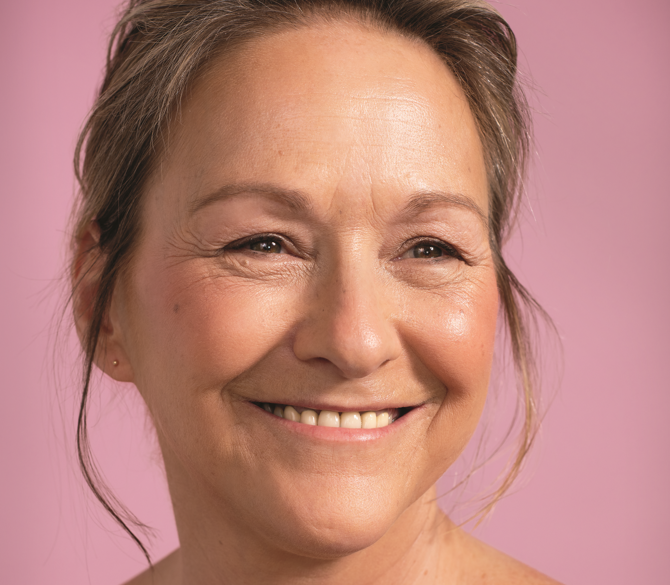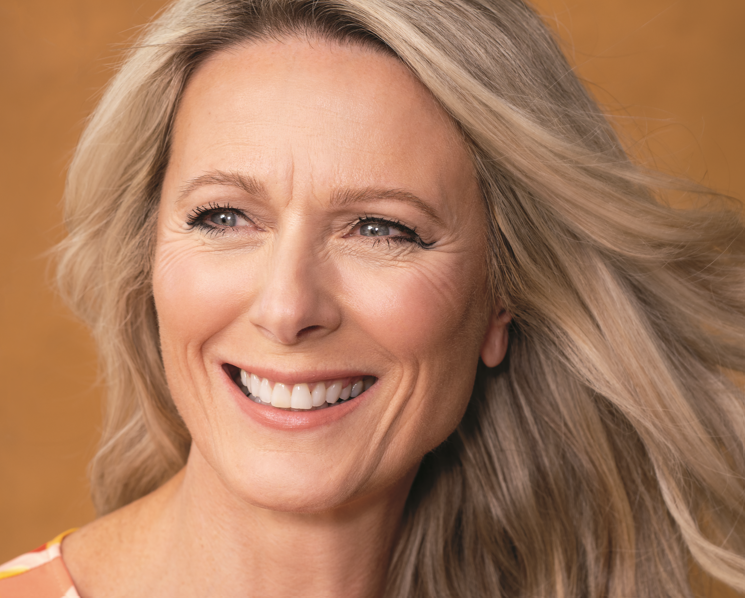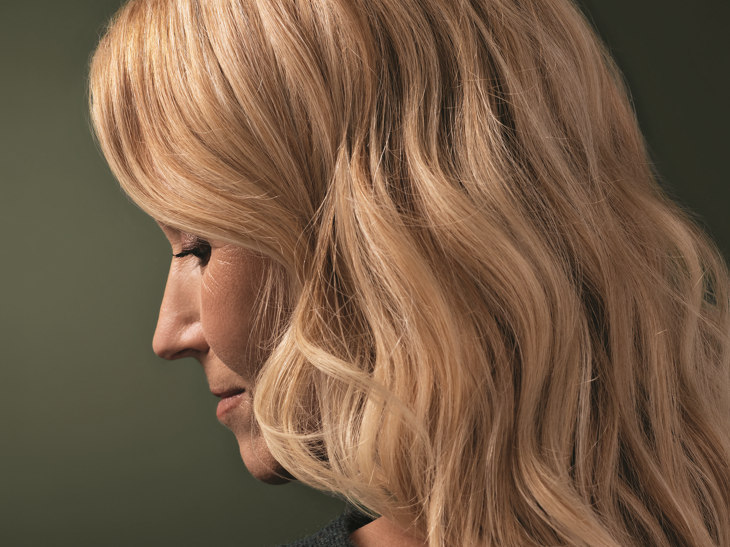As the years go by, some loss of firmness is inevitable, but it’s possible to regain and maintain your skin’s elasticity
By Mariève Inoue
Wrinkles get a lot of attention, but reduced skin firmness is also a common preoccupation. “Wrinkles and dark spots are signs of aging skin, but people tend to accept them more readily than they do sagging—a gradual collapse of tissue that changes the shape of your face,” says Ingrid Longuet Pernet, scientific communications director for the Nuxe cosmetics group. This can make you look sad or tired even though you actually feel energized and full of life.
What causes your skin to sag? Time and genetics, among other things. “Twenty per cent of skin aging is linked to your cells’ chronological age,” Longuet Pernet says. “Cell renewal slows with time, and when women go through menopause, which causes a drop in hormones, it accentuates this reduction in cell renewal and leads to a loss of density and firmness.”
The other 80 per cent of skin aging is related to lifestyle. “The skin acts as the outer barrier of the body and is the last to receive nutrients, so it’s important to eat a healthy diet,” says Annie Lavoie, an internationally certified skin-care and aesthetics instructor at Académie
Edith Serei in Montreal. Smoking and drinking contribute to sagging, as does sun exposure, which “destroys collagen and elastin fibres in the skin,” says Dr. Marie- Andrée LeBlanc, owner of LeBlanc Médecine Esthétique clinics. The deterioration of these substances—which “act like glue to keep your skin firm”—is what causes the sagging that may start to appear when you’re in your early 40s.
How can you slow or even correct a loss of tone and density? “It’s important to have a healthy lifestyle that includes regular exercise and good hydration as well as quality sleep and proper stress management,” Lavoie says. There are also cosmetics and professional treatments that can help.
FOR THE FACE AND NECK
Loss of firmness first appears around the eyes. “The upper eyelids become heavier, making you look tired,” Lavoie says. You may also notice less volume in your cheeks and hollow circles under your eyes. “Horizontal lines appear on your neck, and your skin starts to crease,” Longuet Pernet says.
AT HOME
• The right ingredients.
Antioxidants such as vitamin C play a key role in prevention. “They neutralize excess free radicals, which are responsible for premature skin aging,” Longuet Pernet says. Other ingredients to look for in beauty products include hyaluronic acid, to hydrate and help keep the skin functioning optimally, and retinol, peptides, and microalgae oil, all of which can help stimulate collagen production in the skin.
• The right routine.
Use a serum suited to your skin type in the morning and at night, following that with an eye cream and a moisturizing cream. In the morning, top off your routine with sunscreen to keep your skin well protected. Before bed, choose a product that promotes cell renewal. And don’t forget to apply your skin-care products on your neck, too. “This area tends to lose its elasticity early on,” Longuet Pernet says. She recommends “adding facial massage to your routine” to help your skin-care products sink in. A roller or gua sha massage tool can enhance the experience. “For example, double rollers create a palpate-and-roll effect that energizes the skin in a way only the hands of an aesthetician could without the tool.”
AT THE BEAUTY SALON
• The anti-aging facial.
This treatment combines manual stimulation, which is beneficial for skin firming, and deep exfoliation. At Académie Edith Serei, the treatment includes the application of an alpha-hydroxy acid (AHA) exfoliant to help boost cell renewal, a hyaluronic acid serum, and a collagen mask and a massage that promotes blood circulation. The cost is about $90.
• Radiofrequency.
Using a device that emits electromagnetic waves that penetrate the skin to generate heat, this treatment enables the production of new collagen, helping to firm the skin and smooth fine lines and wrinkles. “It isn’t painful, but it feels hot,” Lavoie says. A series of 10 treatments is recommended, along with regular maintenance. “After a single treatment, you can already see a difference.” The cost is about $60 for 30 minutes.
• Microneedling.
In this treatment, microperforations are created in the skin using a device with tiny needles. This forces the skin to produce new collagen fibres to repair itself, helping to improve firmness, soften wrinkles, and brighten your complexion. Four to six sessions are recommended, with three or four weeks in between. “The effects are noticeable even after one treatment,” Lavoie says.
AT THE CLINIC
• SkinTyte Laser.
This treatment uses pulsed light to heat subcutaneous tissues and launch the collagen production process. “The two most popular areas to treat are the lower half of the face and the neck,” LeBlanc says. Durable results require several sessions, and you must be able to tolerate heat. “If you have excess fat as opposed to sagging skin, surgery may be recommended instead,” she says. The cost is about $300 to $600 per treatment.
• Belkyra.
This treatment is an option if sagging skin has created a double chin. “A substance injected into subcutaneous fat under the chin causes the fat to melt and helps firm the skin,” LeBlanc says. After the session, the neck tends to be swollen, but this only lasts a few days. Two to six sessions are needed, but the results are permanent. Expect to pay about $600 per treatment.
FOR THE BODY
According to our experts, the loss of skin firmness in the abdomen, sides, arms, and just above the knees is what people are most preoccupied with. “While you won’t notice as many wrinkles on your body, your skin may look uneven in texture and appear to droop,” Longuet Pernet says.
AT HOME
Choose firming products that contain the same ingredients as the skin-care formulas you use on your face. Try applying them using deep massage movements to “promote product penetration and better blood flow,” Longuet Pernet advises. Tools such as double rollers are effective.
AT THE BEAUTY SALON
• Radiofrequency.
This treatment can be used on such areas as the triceps, stomach, knees, thighs, and chest. “You’ll notice plumper, softer, and lifted skin,” Lavoie says. A 30-minute treatment costs about $60.
• Lipodermalogy.
Performed using a single device that combines radiofrequency, infrared, and palpate-and-roll technologies, this treatment stimulates collagen production and skin elasticity. A series of 10 sessions is recommended, once a week, at a cost of about $75 per treatment.
AT THE CLINIC
• SkinTyte Laser.
This technology can also be used on the stomach, hands, and knees. According to LeBlanc, it’s a key treatment for skin tightening and for stimulating the production of new collagen and elastin. The cost is about $300 to $600 per treatment.






